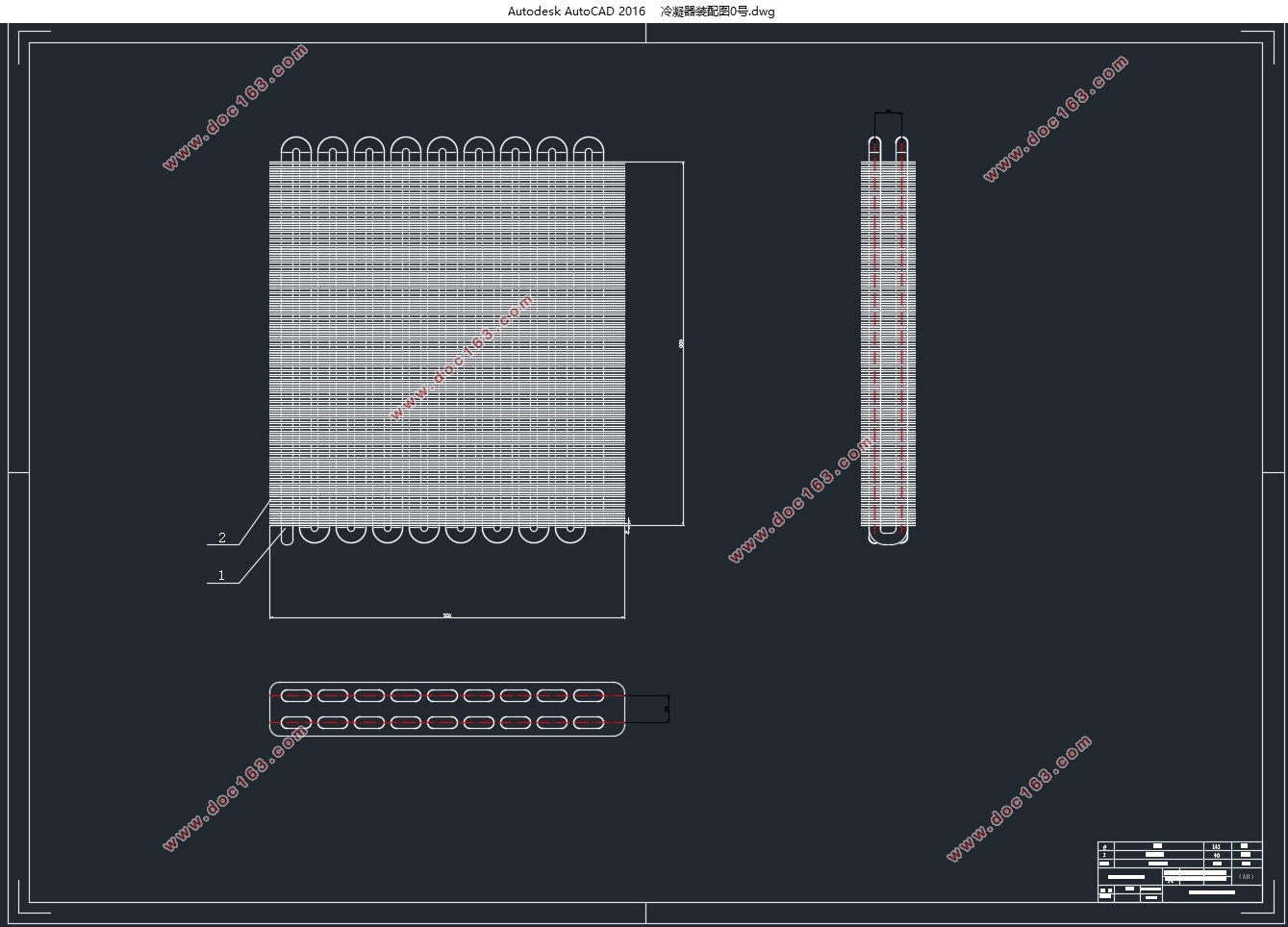轿车空调冷凝器热设计(含CAD图)

轿车空调冷凝器热设计(含CAD图)(任务书,开题报告,文献摘要,外文翻译,论文说明书10900字,CAD图2张)
摘 要
近年来,空调与我们的生活变得越来越紧密,它在汽车行业同样发挥着巨大的作用。然而,传统空调系统使用的制冷剂存在诸多问题,我们急需寻找一种性能优异的替代品。本文的主要目的是寻找一种新型制冷剂并以此为基础设计一款车用空调制冷系统的冷凝器。文章对比并全面分析了多种制冷剂的各项性能,其中R1234yf各方面属性(安全性、基本物理性质等)均衡且无明显缺点,最终确定把R1234yf作为车用空调的新型制冷剂。然后以R1234yf为制冷剂,进行了冷凝器(管片式)的设计计算,得到了冷凝器的基本参数,并且在此数据的基础上,用CATIA建立了冷凝器的三维模型。最后,文章从函数方程的变量角度探讨冷凝器翅片效率的影响因素及其相互之间的关系,并提出具有一定可行性的提高效率的方法。
关键词:新型制冷剂,车用空调,冷凝器,R1234yf
ABSTRACT
In recent years, air conditioning has become more and more closely related to our lives.It also plays a huge role in the automotive industry. However, there are many problems in refrigerants used in traditional air conditioning systems. We urgently need to find a substitute with excellent performance. The main purpose of this paper is to find a new type of refrigerant and design a condenser for vehicle air-conditioning refrigeration system based on this. The properties of various refrigerants are compared and analyzed comprehensively, in which the properties of R1234yf (safety, basic physical properties, etc.) are balanced and have no obvious shortcomings, and R1234yf is finally determined as a new refrigerant for vehicle air conditioning. Then the condenser is designed and calculated with R1234yf as the refrigerant, and the basic parameters of the condenser are obtained. On the basis of this data, a three-dimensional model of the condenser is established with CATIA. In the end, the influence factors of the condenser fin efficiency and the relationship between them are discussed from the variable angle of the function equation, and the methods to improve the efficiency are put forward.
Key words:new refrigerant, vehicle air conditioner, condenser, R1234yf
[来源:http://www.doc163.com]



目录
第1章 绪论 1
1.1选题背景及研究意义 1
1.2国内外研究概况 1
1.3论文主要研究内容 2
1.3.1基本内容 2
1.3.2拟采用的方法和措施 2
第2章 R1234yf的物理性质 3
2.1基本物理性质的研究 3 [来源:http://Doc163.com]
2.2安全性相关物理性质的研究 4
2.3传热与压降的研究 5
2.4本章小结 5
第3章 R1234yf与传统制冷剂的对比 6
3.1 R1234yf与R134a 6
3.1.1 R1234yf与R134a的主要物性参数对比 6
3.1.2 R1234yf的优点 7
3.2 R1234yf与R22、R717、R32 7
3.2.1 四种制冷剂的热物理性 7
3.2.2 四种制冷剂的稳定性对比 8
3.2.3 四种制冷剂的热力学性能对比 8
3.3 本章小结 10
第4章 冷凝器设计计算 11
4.1 确定基本工况参数 11
4.2 计算几何参数 11
4.3 计算冷凝器的空气流量和换热量 12
4.4 冷凝器的换热系数和换热效率 12
4.5 管内侧换热系数 的计算 13
4.6 有关传热系数和传热面积的计算 14
4.7 计算冷凝器的几何尺寸 14
[资料来源:www.doc163.com]
4.8 空气侧阻力的有关计算 15
4.9 本章小结 15
第5章 冷凝器三维模型的建立 16
5.1 建立三维模型 16
5.2 本章小结 17
第6章 影响翅片效率的初步探索 18
6.1几何参数确定 18
6.2 计算空气侧换热系数及翅片效率 18
6.3 效率对比 19
6.4 从函数角度分析换热效率的变化情况 19
6.5提高冷凝器换热效率的方法 20
6.6 本章小结 21
第7章 结论 22
参考文献 23
致 谢 24
[资料来源:http://www.doc163.com]
